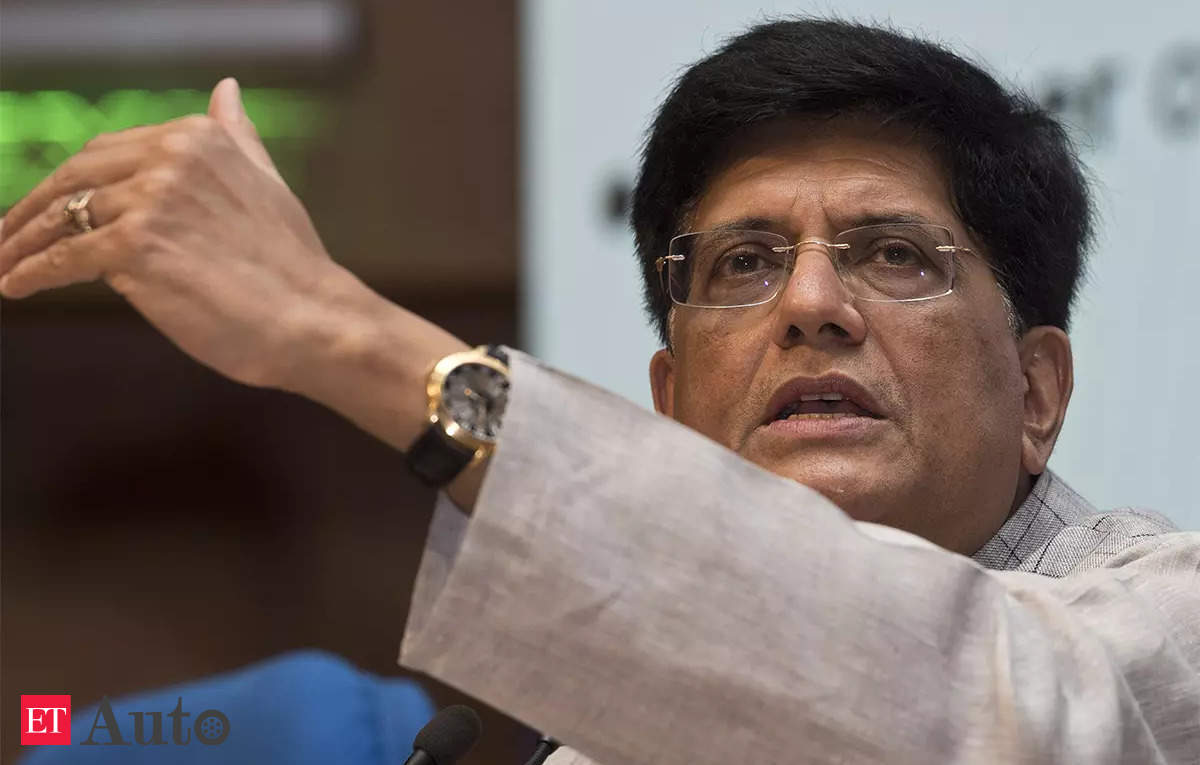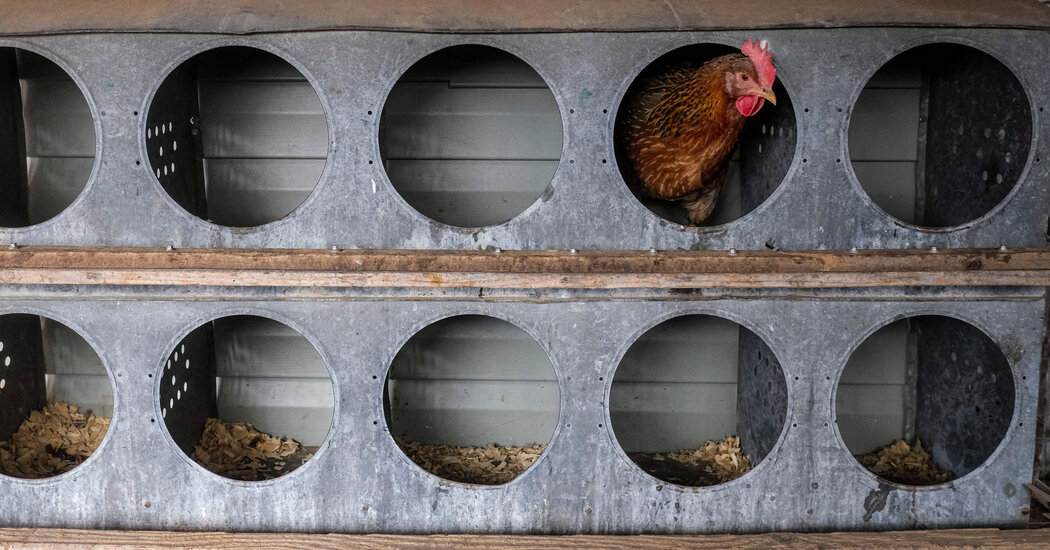This article is part of our special section on the Climate Forward event that will include policy and climate leaders from around the world.
The New York Times Climate Forward event on Thursday will feature distinguished speakers and panelists addressing the challenge of lowering carbon emissions. But in between the onstage presentations, participants also will have the opportunity to engage in small groups with some of the people who are on the front lines of efforts to thwart climate change. They range from a youth leader who helped organize a large-scale march at the United Nations to a waste expert whose videos about trash have gone viral on TikTok. Here are profiles of a few.
Crossing the Generation Gap
Xiye Bastida: activist, co-founder of the Re-Earth Initiative and organizer for Fridays for Future New York City
Xiye Bastida muddies the concept of “youth leader.” At 21, she’s something of a climate activist veteran. She was just 16 in 2019 when she started to help organize a march of about 250,000 people at the United Nations.
Today, she helps 14- and 15-year-old organizers who call and text her for advice. “They’re cute,” she said. Those younger activists tell her they struggle to get people to turn out. “I had to tell them we went for two weeks on subway cars singing climate chants and distributing fliers,” Ms. Bastida said.
Ms. Bastida comes from a family of environmentalists: Her father has campaigned to preserve the wetlands of his Indigenous community and her mother is an ethno-ecologist. Members of the Mexican Otomi-Toltec people, they are from San Pedro Tultepec, about an hour west of Mexico City.
Ms. Bastida and her family relocated to New York in 2015, just as disastrous floods inundated their native town. Thirteen at the time, she said the experience made climate change urgent for her. It wasn’t long before she was arranging climate change walkouts at her high school in the Hell’s Kitchen neighborhood of Manhattan to bring attention to the crisis.
In the run up to the 2019 protest, Ms. Bastida said she was advised to tone down the generational antagonism. “We had this very anti-boomer narrative: ‘You stole our future,’” she said. Told that would discourage adult turnout, her group changed tack.
Besides mentoring younger leaders, Ms. Bastida is a senior at the University of Pennsylvania, majoring in environmental studies. She also helped plan this month’s climate march at the U.N., which she said was organized by people from all age groups. “We all have to adapt,” she said.
A Grain at a Time
Rachel Stroer: president of the Land Institute in Salina, Kan.
You might think that an M.B.A. would be an asset for the leader of a nonprofit that’s trying to overhaul the agriculture system. But Rachel Stroer said she was hired in spite of hers.
Founded by the plant geneticist Wes Jackson in 1976, the Land Institute in Salina, Kan., has billed itself as rogue and unconventional. After joining in an operations role in 2016, Ms. Stroer ascended the ranks, becoming president in 2021.
The organization oversees some of the most promising technologies for grain, a plant that takes up a majority of the world’s cropland and accounts for most of the calories that humans consume.
“The thing that’s most inspiring about grain agriculture in particular is that it is so vast and so deep in the history of modern life,” Ms. Stroer said.
Land Institute scientists created Kernza, the first perennial grain commercially grown in the United States, and their perennial rice has been adopted by 44,000 farmers across China. (Perennial means it grows for more than a couple of seasons without replanting.) Because the roots of such grains stay in the soil, they sequester carbon and rely on living microbes instead of chemical fertilizers.
Ms. Stroer, 42, grew up on the Kansas prairie but moved to New York for undergraduate studies at New York University. While there, she said, she held food and hospitality jobs that helped her understand the role of food as a bridge to the heartland, especially when discussing climate change.
The need to grow grain sustainably affects everyone, she said, as it is the key ingredient in so many of the things we love, whether you live in the rural Midwest or in a coastal city.
“We don’t know what 2050 is going to look like with climate change on the trajectory that it’s on, but I hope that of all the things that are still around, sourdough and beer are there,” she said.
Making Sacrifices
Josh Fryday: chief service officer for California
People concerned about climate change often ask, “What can we do?” California is the first state to try to answer that question with a cabinet-level position.
Josh Fryday is the state’s chief service officer, and he is responsible for the state’s volunteer programs. That includes encouraging involvement in climate change, even paying benefits of as much as $30,000 to organizers and helping cities mobilize households to adapt to a warming planet.
Mr. Fryday, 42, a U.S. Navy officer in the Judge Advocate General’s Corps from 2009 to 2013, credits his military background for his interest in the benefits of service. He said he was motivated to sign up after seeing how Americans were disconnected from the wars in Iraq and Afghanistan.
“We didn’t sell war bonds,” Mr. Fryday said. “We actually lowered taxes. No one was asked to sacrifice anything,.
That is a stark difference from the norms of World War I and II, he said, where citizens were asked to grow liberty or victory gardens and to donate to the effort.
There is the question of how much difference small acts of service make in the face of continued large-scale emissions of carbon that have been linked to climate change.
“I think we’re going to find out,” he said, “but what I found is throwing our hands up in the air and saying, ‘The issue is too big, there’s nothing I can do about it,’ certainly isn’t the answer.”
He also points to the ancillary benefits that come with service: skills, confidence and community building, to name a few.
Ultimately, Mr. Fryday said, the goal is to build a culture where service is the norm.
As for what the victory gardens of the climate age might be, “Composting,” he said.
A Life in Waste
Anna Sacks: @thetrashwalker on TikTok, legislative chairwoman for the Manhattan Solid Waste Advisory Board and co-founder of New York’s #SaveOurCompost coalition
Anna Sacks isn’t sure how to tell people at a dinner party what she does for a living.
“Sometimes, I go broad and say I work in sustainability. Sometimes, I go a little bit more specific and say I work in waste,” she said.
To the millions of people who have viewed her videos on TikTok, Ms. Sacks is known as the Trash Walker. She documents her encounters rifling through the garbage outside retail stores, like Coach and CVS, throughout New York City. She is also known to the City Council thanks to her role recommending waste policy as the legislative chair of the Manhattan Solid Waste Advisory Board.
In 2016, Ms. Sacks was working at an investment bank and failing to find meaning in a career that consumed most of her free time. She quit and signed up for a fellowship at a regenerative farm in Connecticut called Adamah, which is geared toward young Jewish adults. She said she was suddenly tracking the seasons and appreciating the benefits of composting.
When she returned to the city, she began looking at waste differently. Saddled with a “confusing résumé” of finance and farming, she took to social media. Eventually her videos went viral and some corporations started changing their practices — for instance, Coach said it would no longer destroy unsold products and Starbucks announced it would reduce waste.
Ms. Sacks, 32, said that while her legislative work took up much of her time, she hadn’t figured out how to make that go viral.
“I love going through the trash. But I’m filling up a cart at the end of the trash walk, which is a drop in the bucket of New York City waste versus if you work on something larger like mandatory universal organics.”
Still, Ms. Sacks said, it’s a bit like voting. All the small efforts add up when you have millions of people taking part.
Get Off the Lawns
Kim Eierman: ecological landscape designer and environmental horticulturist
When Kim Eierman moved to Westchester County, a suburb just north of New York City, 29 years ago, she had no idea what to do with her back yard. So she signed up for classes at the New York Botanical Garden in the Bronx, seven miles down the road, and discovered a pathway to a new profession.
She had always been what she called a nature geek, and she was not happy with her job on Wall Street. “So I made a big switch and I went for the other kind of green,” Ms. Eierman said.
She soon became fascinated by native plant species and started a business as an ecological landscape designer. That was 25 years ago. She now also teaches at the botanical garden, as well as the Brooklyn Botanic Garden and the Native Plant Center at Westchester Community College.
Besides protecting native plant species, she implores gardeners to plant for the creatures that live around us, including birds and the insects they feed on. That usually means giving up what Ms. Eierman called the “green desert”: the lawn.
“There are so few things that we can do in our lives that have a dramatic impact in a positive way, and this is one,” Ms. Eierman said.
When she started, Ms. Eierman said she had to explain that native plants were not weeds that needed pulling. She described her most recent clients as young urban professionals who just moved into a new space with a yard: “a generation that has green values but really no knowledge about landscapes.” Ms. Eierman said she was eager to share that knowledge.
Journei Bimwala: urban forager, clinical herbalist and educator
“I go foraging the way people go to the supermarket,” said Journei Bimwala about her practice of identifying and preparing natural remedies using plants that grow wild in New York City.
Foraging is illegal throughout the five boroughs except for an area of parkland called the Bronx River Foodway, where Ms. Bimwala teaches about the nutritional and medicinal benefits of plants.
She began foraging 12 years ago when she asked a ranger in a public Bronx park, Orchard Beach, about a plant that caught her attention. It was an outdoor nature class for children and Ms. Bimwala was there with her 9-year-old son. The ranger dismissed the plant as useless, an invasive species, but Ms. Bimwala discovered it was mugwort, known for healing properties.
She did the same thing with other species until parents at the nature class started asking her to share her findings. Now she teaches urban foraging in New York and New Jersey and online around the world.
“What I do in my work is to connect people to the land by getting them to get to know the wild and medicinal plants that are growing around us so that those plants can be used,” she said.
Ms. Bimwala, 40, was born in the Democratic Republic of Congo, where, she said, herbal remedies were a part of life. She makes it her mission to laud the benefits of what is freely available, like the leaves of a linden tree, which she recommends for relaxation. Instead of buying linden tea in the grocery store, Ms. Bimwala advised, just pick a few leaves off a tree and make your own.











